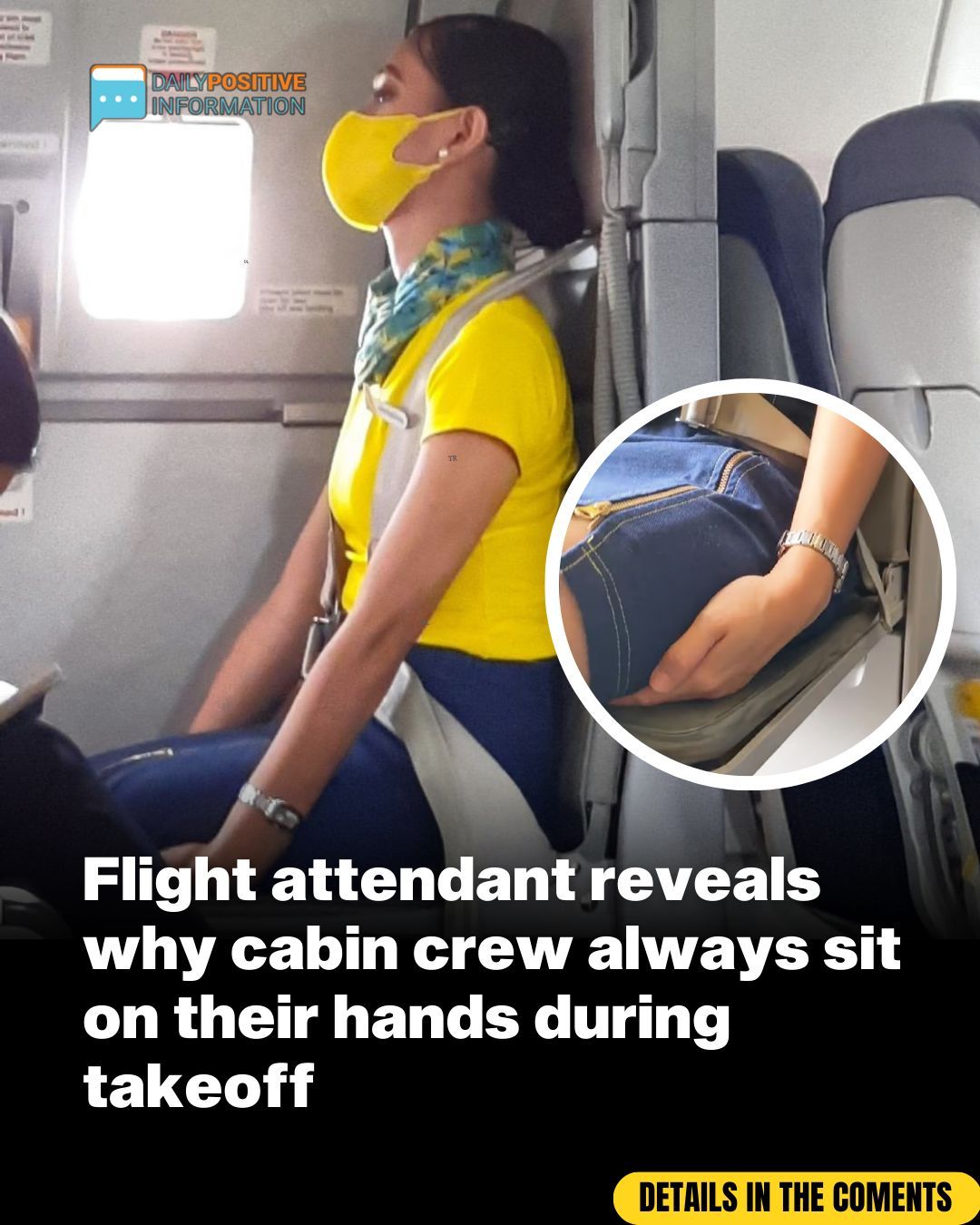ChatGPT đã nói:
When it comes to flying, most people tend to associate flight attendants with offering drinks, serving meals, or helping passengers find their seats. But in reality, their job responsibilities go far beyond in-flight hospitality. Flight attendants are highly trained safety professionals responsible for ensuring the health and safety of everyone on board. One particular behavior that often catches the attention of passengers is what seems like an unusual habit: sitting on their hands during takeoff and landing.

While it may look strange to the average traveler, this practice, known as the bracing position, plays a critical role in aviation safety. In a popular TikTok video, Cebu Pacific flight attendant Henny Lim explains this often-misunderstood routine. The bracing position isn’t just about sitting still; it involves a set of specific movements designed to protect the body in case of an emergency.
According to Lim, the position includes fastening the seatbelt snugly, sitting upright with the back straight, placing both hands on the thighs with thumbs tucked under the fingers, keeping the arms loose and close to the body, and making sure both feet are flat on the floor. While the posture might seem stiff, every detail is intentional. The primary purpose of this position is to minimize movement during a sudden impact, such as a crash landing, and to reduce the chance of injury.
By securing themselves in this way, flight attendants can better withstand the force of an emergency landing and be ready to help others. Lim also explains that during this time, flight attendants perform what is called a “silent review.” This is a mental checklist where they quietly go over emergency procedures, review the location and function of safety equipment, rehearse the steps to open emergency exits, and stay alert for any visual cues outside the aircraft. This helps ensure they’re mentally and physically prepared to respond immediately should something go wrong. The importance of the bracing position is also backed by aviation authorities like the Federal Aviation Administration (FAA). In official FAA guidelines, the posture is highlighted for its role in reducing the risk of flailing limbs and minimizing secondary impact injuries. When someone is unsecured or moves uncontrollably during a collision, they are more likely to suffer serious harm.
By adopting a position that stabilizes the body—particularly the head and upper torso—against any surfaces likely to be impacted, the risk of injury is significantly reduced. This is not just a precaution; it’s a safety protocol grounded in extensive research and training. Beyond the technical explanation, flight attendants like Henny Lim have taken to platforms like TikTok to shed light on their responsibilities and share the behind-the-scenes reality of their work. These insights have opened up new awareness among passengers who might otherwise take these procedures for granted. Another flight attendant, Destanie, shares stories about the extreme lengths some passengers go to for better seats, often bending rules or acting out. While these anecdotes are often shared with humor, they also serve as important reminders of the need to respect flight crews and adhere to established safety measures. Fellow crew member Esther Sturrus also adds perspective on what it’s like working in aviation. While both she and Destanie acknowledge the challenges—like dealing with unruly passengers, long hours, and high-pressure situations—they also express gratitude for the lifestyle, travel opportunities, and sense of purpose their roles provide. At the heart of it all, their number one priority remains passenger safety. What might seem like a simple gesture—sitting with hands on thighs during takeoff or landing—is actually a well-rehearsed safety measure rooted in years of training and experience. It reflects the professionalism and dedication of cabin crew members whose work often goes unnoticed. Understanding the reason behind this practice helps passengers develop a greater appreciation for the expertise involved in keeping flights safe. As long as flight attendants continue to share their knowledge and personal stories, passengers will gain more insight into the thoughtful, critical procedures in place to protect them—encouraging everyone to view air travel with more respect for those who make it possible.





